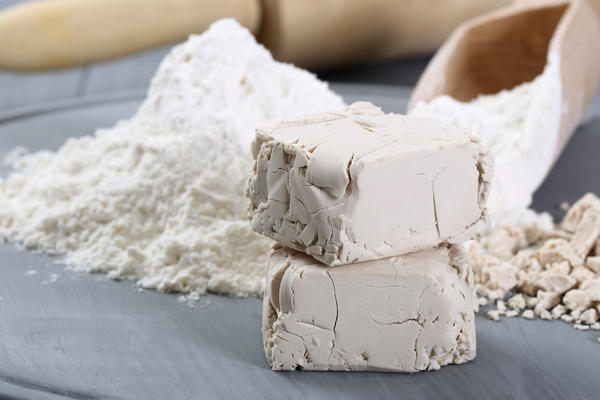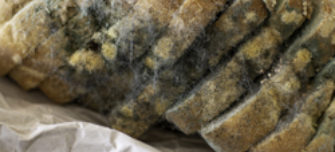Producers
Micro-organisms have been used since ancient times to make bread, cheese, yoghurt and wine. Food manufacturers continue to use micro-organisms today to make a wide range of food products by a process known as fermentation. Fermentation not only gives food a good taste, texture and smell, but it causes changes that reduce the growth of unwanted food microbes. This improves the food’s storage life and safety. Nowadays fermentations are used to make an amazingly wide range of food and drink.
Fungi have been used as sources of food and for food processing for thousands of years. In addition to eating edible fruiting bodies, such as mushrooms, directly, various fungi have been used to supplement and add flavour to foods. Yeasts are used in the fermentation of fruits to produce wines, cereals to make beer, in bread manufacture and flavouring in the form of yeast extract. Filamentous fungi are used in traditional processes for the ripening of cheeses and in the production of enzymes used in the food industry.
Bread
A yeast called Saccharomyces cerevisiae is mixed with sugar, flour and warm water to make bread. The yeast uses the sugar and the sugars present in the flour as its food. It breaks them down to provide the yeast with energy for growth. The yeast grows by budding. As it does this bubbles of the gas carbon dioxide are produced in the dough.
The bubbles make the dough expand and rise. This is because the dough is extremely sticky and it traps the bubbles, preventing them from escaping. When the dough is baked the heat kills the yeast and the dough stops expanding.

Yoghurt
Yoghurt is a fermented milk product in which milk is inoculated with a starter culture containing two different types of 'lactic acid bacteria' called Streptococcus thermophilus and Lactobacillus bulgaricus. First the milk is heated to a very high temperature of 85–95°C for 15–30 minutes. This kills off any unwanted microbes that may be present. The milk is cooled and the mixture of lactic acid bacteria is added. As the bacteria grow they use the milk sugar lactose as an energy source and produce lactic acid. The milk is kept at 38–44°C for 12 hours to allow the two microbes to grow. Initially S. thermophilus ferments the lactose; as the level of acid accumulates it is suppressed. L bulgaricus, which is more acid tolerant, continues to ferment the remaining lactose.
During this process the pH drops from 6.5 to around 4.5. This inhibits the growth of spoilage microbes. Consequently yoghurt keeps well in the fridge for some days. The presence of lactic acid causes the structure of the milk protein to change, giving yoghurt its special thickened texture. The lactic acid also gives the yoghurt its sharp taste. Other fermentation products such as acetaldehyde give the yoghurt its characteristic smell. Fruit and flavourings can then be added and the yoghurt packaged in the familiar pots.
-
Food poisoning
There are probably at least a million cases of microbial food poisoning in the UK every year costing an estimated £1.5 billion a year – how can anything as small as a microbe cause all this trouble?
-
Spoilers
When microbes grow on food it soon beings to smell nasty, look slimy, change colour, taste awful or even get a furry coating and is inedible. Find out what’s causing this.




